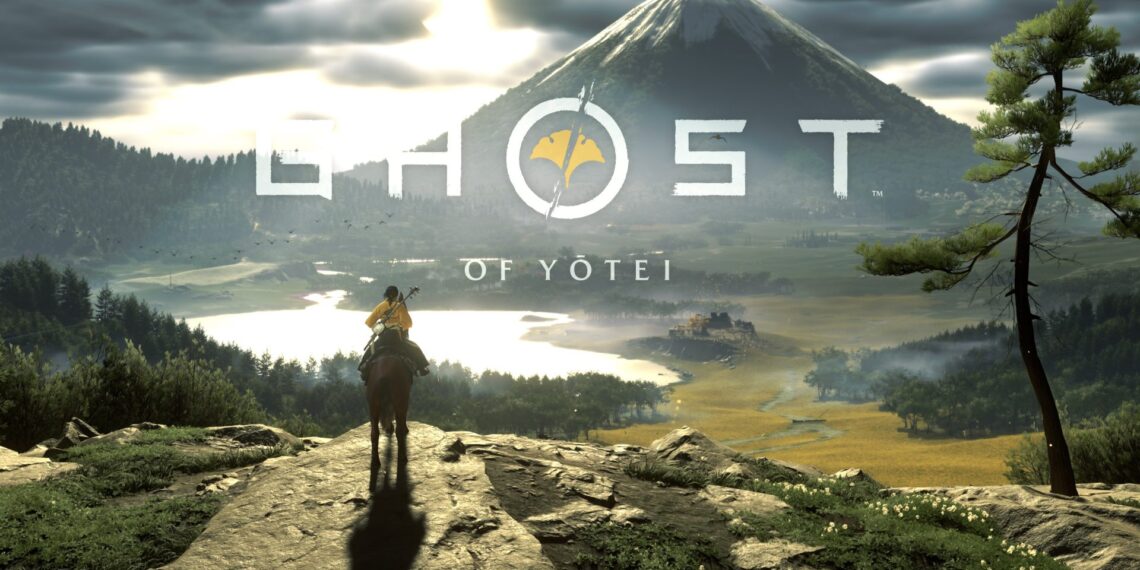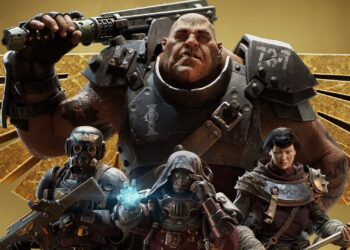Ghost of Yōtei has been a exertions of affection for Sucker Punch, and we’re glad to have it out on this planet for everybody to play. Now that gamers have got a style of the sport, we idea this was once a excellent alternative to speak somewhat bit concerning the era that helped get us right here.
Coming off of what we accomplished with Ghost of Tsushima, the mission imaginative and prescient for Ghost of Yōtei put a more potent emphasis on a participant’s sense of freedom in an untamed desolate tract. This intended striving for much less intrusive techniques to lead gamers, gorgeous environments with longer sightlines, extra versatile weapon fight, memorable characters with character, and emotional tale moments. Seeking to do all this whilst keeping up a excellent body charge is obviously a problem.
So, let’s dig into a couple of facets of the era we used to create Ghost of Yōtei!
Wandering a wild international
In prototyping our imaginative and prescient without spending a dime exploration, we discovered it most efficient if gamers may gaze throughout an exquisite panorama and observe their interest to seek out the sport. From a technical standpoint, touchdown that feeling required longer sight traces, that means higher rendering for grass, terrain and mountains into the gap.
We progressed the semblance of far away mountains via baking fashions and detailed terrain fabrics into textures that shall we show at upper element. We additionally doubled the quantity of grass and renderable pieces our GPU compute renderer is permitted to provide. On this shot, the far away mountains with over 1,000,000 bushes, rocks, and timber are culled right down to about sixty thousand particular person pieces that we render to generate our G-buffers to construct the general symbol.
We use procedural assisted authoring ways and lean closely on GPU compute to procedure all of those circumstances successfully with out CPU involvement. This comes to sequences of compute jobs to accomplish occlusion culling, reminiscence allocation, fill out draw information prior to we readback that knowledge at the CPU to sew into the general command lists for the body. Right here’s an animation of a an identical shot with all GPU drawn geometry animating into position to provide you with a way of the size concerned. We use those ways for runtime generated information as smartly like our vast fields of vegetation, or even from time to time for such things as ropes and chains.
To present every house of the arena a singular taste, we constructed interplay programs that lend a hand emphasize their subject matters. A lot of the arena has grass or small crops, and along with deforming with wind and persona movement, we added a machine that renders weapon sweeps right into a “reduce buffer.” This buffer is then sampled via cuttable geometry and is used to spawn debris with the geometry above the reduce. This permits Atsu to chop maximum grass, vegetation and small crops within the recreation.
Hokkaido has Japan’s maximum excessive winters, so we would have liked to realistically painting the interplay of characters with deep snow. To toughen that, we constructed a terrain tessellation machine that each will increase the quantity of element that may be represented via the terrain, and which can also be dynamically deformed at runtime. To reach this, debris and geometry are rendered to a displacement buffer as characters stroll, roll and battle thru it. This was once versatile sufficient that we prolonged it to permit characters to knock snow off of bushes and timber, spawning snow debris within the procedure. After we mix that with a brand new snow sparkle impact the usage of solid screen-space noise, it finally ends up having a look like this.
Tall mountains like Mt. Yōtei are regularly coated via clouds, so we needed to get a hold of some way of rendering clouds in entrance of worldwide geometry, which wasn’t conceivable in Ghost of Tsushima’s engine. We additionally sought after to offer the impact of stormy, unsettled climate via expanding the velocity at which clouds may transfer. To allow sooner cloud movement with out objectionable artifacts, we retailer the typical visual intensity of every texel within the cloud map (measured from the digital camera), which permits us to make use of parallax mapping ways whilst scrolling every cloud body. (We additionally mix 3 cloud frames as a substitute of simply two, which leads to even smoother movement.) By way of additionally storing the typical visual squared intensity within the cloud map, we’re in a position to reconstruct a easy statistical distribution of the cloud opacity alongside every ray, and this shall we us compute how a lot the clouds must difficult to understand international geometry like mountains.
Fog and atmospheric scattering was once crucial center of attention when organising the artwork taste of Ghost of Tsushima, and for Ghost of Yōtei we would have liked to construct on that via including toughen for native fog volumes. Those are computed successfully via the usage of the PS5’s expanded 16-bit floating level GPU directions. As an aspect impact of our cloud optimizations, we compute a light-space cloud shadow map, and this permits crepuscular rays (“god rays”) to be visual in our volumetric fog, even a long way from the digital camera. We additionally let artists position “god ray goals” on this planet in order that they’re extra continuously lit via a hollow within the clouds.
Persona and motion
Certainly one of our number one targets was once to make the arena of Ghost of Yōtei really feel alive. We wish the whole thing at the display screen to transport with the wind, together with the entire clothes characters put on, the tassels on guns, and the entire striking fabric in settlements. Whilst you roll round and battle, we need to kick up mud and leaves whilst leaving you muddy and bloody, to in reality anchor you on this planet.
Atsu’s advanced costumes can best transfer realistically because of the brand new layering toughen we constructed into our high-performance GPU compute fabric machine. Along with including toughen for a couple of layers of simulated fabric (observed underneath), we toughen fabric collisions, and use a collection of sparsely tuned heuristics to simulate massive numbers of particular person fabric simulations successfully. This is an instance of Atsu in certainly one of her extra advanced costumes, surrounded via shifting fabric.
GPU debris were a robust swimsuit for Sucker Punch since Notorious 2d Son. In Ghost of Yōtei we proceed so as to add to our bag of tips, permitting debris to pattern terrain subject material, deformation and water float. For instance, this shot displays debris touchdown on and flowing down river.
Along with affecting the arena, we anchor characters via having the arena punch again. We do that via splatting knowledge right into a directional grid deformed across the persona which we then use to layer in texture results to make the nature rainy, bloody, muddy or snowy.
We additionally leverage our particle programs to permit the participant to change to the previous to discover Atsu’s circle of relatives historical past. To change between previous and provide, we alter the skeleton and geometry of Atsu whilst protecting her persona state and animation constant. Parts of the background and lighting fixtures also are modified immediately because of the velocity of the SSD with some sparsely selected prefetching. That is executed at the back of a curtain of animating debris which pattern a duplicate of the body buffer from simply prior to the transition.
Ray Tracing and PS5 Professional improvements
As a local PS5 recreation, we knew we would have liked to reinforce symbol high quality via leveraging one of the most platform’s more recent era. With the discharge of the PS5 Professional, we additionally sought after to push in a path that will lend a hand us with long run video games. In line with the forged toughen from the PlayStation central era groups, we invested in two giant spaces: ray tracing, and symbol upsampling with PSSR.
Since Ghost of Yōtei takes position within the desolate tract of seventeenth century Hokkaido, there are few mirror-like surfaces that lend themselves to ray-traced reflections. As a substitute, we made up our minds to make use of ray tracing to reinforce the constancy of our international illumination answer. We attacked this from two instructions: first with a extra automatic, progressed baked lighting fixtures type, which shall we then increase with short-range ray-traced international illumination (RTGI). This required important adjustments to our mesh streaming layout, permitting us to dynamically decompress the acceleration constructions utilized by the ray tracing {hardware}. By way of the usage of the PS5 Professional’s extra environment friendly ray tracing {hardware}, gamers can allow RTGI concentrated on 60 frames in line with 2d on Professional consoles.
For Ghost of Yōtei we rebuilt our body to make use of a extra common dynamic solution set of rules, with upsampling, partially so shall we benefit from PSSR. PSSR works rather well for us with just a few tweaks, together with operating conservative rasterization for small debris. By way of comparability, our same old upsampling set of rules calls for considerably extra hinting and authoring lend a hand to succeed in excellent effects. Right here’s a side-by-side glance. When you zoom in very shut (16x prior to gif compression), you’ll be able to see that PSSR does a greater activity reconstructing ins and outs on structure and foliage. It is usually extra solid underneath movement.
Loading pace
For a very long time, Sucker Punch has prided itself on getting gamers into our video games as briefly as conceivable. In Ghost of Yōtei we endured this custom via doubling down on speedy load occasions.
We optimize loading via preprocessing information in order that it calls for just a handful of SSD reads and patching operations in line with location or terrain tile to load gameplay-relevant information. We then compute and cargo best the feel mips and mesh LODs had to render the primary body, with one learn in line with component. Right here’s what loading from the a long way south to the a long way north looks as if with out the display screen pale out. (Notice that that is moderately slower than it could be if we didn’t need to render the arena the entire time.)
All the way through construction we “pet food” those programs reasonably than the usage of a distinct loading type for transport builds. Canine fooding is programmer-speak for each and every programmer, artist and fashion designer trying out what we send to reinforce its high quality.
Conclusion
It is a small peek into one of the most technical paintings we do at Sucker Punch. Making video games is greater than that despite the fact that — it’s an enormous staff effort with artwork informing era and era informing artwork during.
After we started this mission 5 years in the past, our objective was once to construct a recreation international that gamers would really like getting misplaced in. A lot of our technical choices have been anchored across the core delusion of Ghost of Yōtei — that of a wandering warrior coming to phrases with occasions from her previous. We’re overjoyed to peer this imaginative and prescient coming to lifestyles with gamers sharing their studies and posting improbable in-game screenshots and movies the usage of Picture Mode.
We’re without a doubt pleased with the outcome and we are hoping everybody enjoys wandering the desolate tract in Ghost of Yōtei.
When you’re excited about extra information on Sucker Punch’s era and construction procedure, check out our previous displays at meetings like GDC and SIGGRAPH. We predict to percentage extra in 2026.
Particular because of Jasmin Patry, Doug Davis, and Eric Wohllaib who helped me edit and get ready content material for this submit, in addition to the entire Sucker Punch other folks whose paintings I’m representing right here.















